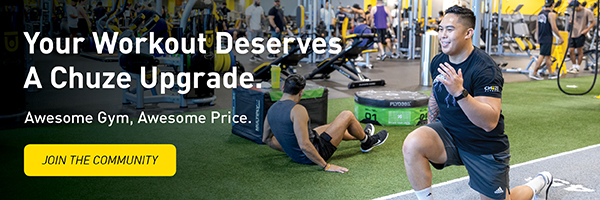Belt belts: a step-by-step instruction and privileges manual and video
https://www.youtube.com/watch?v=l_txvyczwcm
Training at the gym is only second in the second place. After all, if you hurt yourself, you can have a couple of weeks, all your achievements go down the drain.
So if you actually find a practice Combination With the results of muscle and construction results, security is worth the inclusion in your order in your session.
Exercise we are talking about? A belt of belt.
Belt rats give Barbell compression position when destroying the strain behind you. In addition, they conduct a high effective training – and in this manual we mean how and why we should try them.
Belt belts and explained
Think a belt belt as a heavy change in traditional compression. The specified weight is attached to you by the belt, the maximum increases your achievements. If you want to improve the power of a low body and The balance shows confidently as belt kosavori.
Like Squats, belt belts targeted several large muscle groups, including:
- Shine
- Yeast
- Square
- Calves
- Fections hips
- Nuclear muscles
However, traditional, anywhere, the belt belt requires equipment. You need belt and weights (or belts belt car) to complete this workout.
Many benefits of belt belts
With this, it is worth having additional adjustment and effort. May the belt rats are in every athlete and the gym, if you are not amateur or fitness fan.
In particular, the belt is familiar with squares
- Building the power of the lower body – When you raise a belt belt, you quickly build muscles on your feet. The growth of these muscles will help you work better in the gym, as well as in other exercises, such as sports, hockey and swimming. As a bonus, belt rats strengthen your ankles and knee joints, which frees injuries in wounds.
- Promoting stability – All compressive exercises attract your attachments. These small muscles in the internal knees contribute to your stability and mobility, help you to balance when you walk or stand.
- Protecting the spine – belt belts are especially useful for mobility problem or chronic painful people. The belt belts are hips, unlike the barbell, which is compromised all weights on your back. This placement reduces the risk of £zura injury.
- Increasing flexibility – When it is done properly, the belt belts help keep your muscles. Each time you pass through the complete spectrum of the movement, you increase your feet and hips and general flexibility.
How do the belt belt belt?
There are two ways to do belt belts. If your gym has proper furnishings, you can do whichever you want.
The first method includes a specialized belt you are suffering from weight. The second option uses a struture belt square with a bowl and fraction in Belt.
Regardless of what method does not choose, you follow the same stages to complete the package of belt belts:
- Step 1: Choose your weight – First, you decide how much you want to lift. We offer to start light plates before working on your way.
- Step 2: Put the belt – Then you choke the belt around your body, tie the belt to your waist.
- Step 3: Pour into Squats – Wighted belt ready with belt, straighten your knees and bend your knees. Bring for at least in the skill of at least in the skill.
- Step 4: Correct your feet “Return to stand up, take the heel and straighten your feet.” Repeat as needed.
Useful tips for beginners
If you are new to belt belt belts, you can find the exercises you scare. These tips must help you win the fear:
- Practice with lightweights – Although it makes it easier, do the first belt belt belts with 5 or 10 lbs. It is more important to study the correct form than lifting heavy load. Once you are comfortable, you can increase weight.
- Start with fewer reps – The squares of the belt are relatively intense, so it makes it easier. At first there are enough sets of 5-10 reps.
- Low low collapse – You see the greatest achievements when you can deeply deeply. If possible, place the seat to the ground and your thighs lower to the ground.
General errors to prevent
Regardless of your experience is the belt belt, you can chance to develop bad habits. Don’t worry – it happens.
An important part of this is to notice and correct these habits. Some mistakes to look for here.
Incorrect placement of belt
The first timers sometimes wear the belt very high or very low. Unfortunately, the incorrect placement can lead to cancel one of the most important benefits of belt.
Before starting, hip on the bottom of the belt. This location equates weight and keeps you safe.
Bent forward
Usually, when you bend on the knees – you can choose something or tie your shoes – you hips. However, it is very important to stand up on your body when using belt belts.
Save the vertical torso and a compressed core for optimal results.
Is hiding through exercise
As always, slowly and winning the competition. If you try to block you through a pack of belts and take your time, try to improve your time and down.
Moving with management reduces the risk of injury and allows you to enjoy the maximum profit of your training.
Chuze Fitness: Main Environment for Belt Belts
If you have never tried a belt belt, now the best time to add your normal time. Belt compression help you build a low body force quickly and improve the balance.
Because the belt quakes are required of specialized equipment, you need to visit the right institution. Fortunately, along with other exercises that I want to do to you, you have all the means necessary to complete the right belt belts.
Start your membership today!
Sources:
Cleveland clinic. Here is the correct way to compression. https://healthCellic.org/Poper-squat-form
National Center for Biotechnology Information. Anatomy, Bone Posevis and lower limbs: Sumherth additives muscles. https://www.ncbi.nlmm.gov/Ooks/wnbk534842/
 Reviewed by:
Reviewed by:
Ai is a fitness vice presence, group of fitness and collective learning departments of the 33 fits. He has a club management, personal trainings, group of activities of exercises and teachers 25 years of career. Ai loves the health of San Diego, San Diego, Snoborer and everything.





